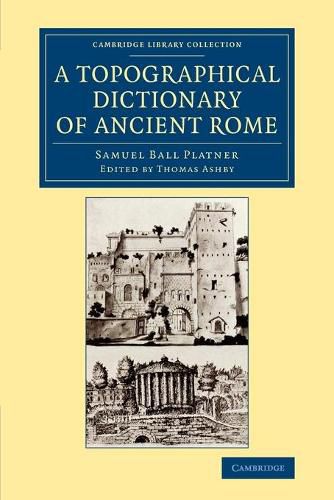Readings Newsletter
Become a Readings Member to make your shopping experience even easier.
Sign in or sign up for free!
You’re not far away from qualifying for FREE standard shipping within Australia
You’ve qualified for FREE standard shipping within Australia
The cart is loading…






This useful topographical dictionary was compiled by Samuel Ball Platner (1863-1921) of Western Reserve University in collaboration with Thomas Ashby (1874-1931), the third director of the British School of Archaeology at Rome. Sadly, Platner died before the work was completed, and Ashby eventually published it in 1929. The bulk of the work is an alphabetical list of the buildings, streets and geographical features in ancient Rome mentioned by ancient authors and/or discovered by more recent exploration and excavation of the ruins, with details about literary and historical references, and about the original and any surviving structure. There is also a chronological index to those monuments and other buildings that are dateable, and a large map (downloadable from the web at www.cambridge.org/9781108083249). With listings from ‘Acca Larentia’ to ‘Zater(…nses)’, the work is an invaluable tool in the exploration of Rome, whether by the scholar, student, or visitor.
$9.00 standard shipping within Australia
FREE standard shipping within Australia for orders over $100.00
Express & International shipping calculated at checkout
This useful topographical dictionary was compiled by Samuel Ball Platner (1863-1921) of Western Reserve University in collaboration with Thomas Ashby (1874-1931), the third director of the British School of Archaeology at Rome. Sadly, Platner died before the work was completed, and Ashby eventually published it in 1929. The bulk of the work is an alphabetical list of the buildings, streets and geographical features in ancient Rome mentioned by ancient authors and/or discovered by more recent exploration and excavation of the ruins, with details about literary and historical references, and about the original and any surviving structure. There is also a chronological index to those monuments and other buildings that are dateable, and a large map (downloadable from the web at www.cambridge.org/9781108083249). With listings from ‘Acca Larentia’ to ‘Zater(…nses)’, the work is an invaluable tool in the exploration of Rome, whether by the scholar, student, or visitor.